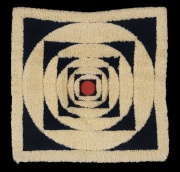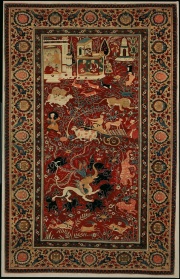Difference between revisions of "Pile"
Jump to navigation
Jump to search
(username removed) |
(username removed) |
||
| Line 11: | Line 11: | ||
== Authority == | == Authority == | ||
| − | * | + | * Hoechst Celanese Corporation, ''Dictionary of Fiber & Textile Technology'' (older version called Man-made Fiber and Textile Dictionary, 1965), Hoechst Celanese Corporation, Charlotte NC, 1990 |
| − | * | + | * Rosalie Rosso King, ''Textile Identification, Conservation, and Preservation'', Noyes Publications, Park Ridge, NJ, 1985 |
| − | * | + | * Random House, ''Webster's Encyclopedic Unabridged Dictionary of the English Language'', Grammercy Book, New York, 1997 |
* ''The American Heritage Dictionary'' or ''Encarta'', via Microsoft Bookshelf 98, Microsoft Corp., 1998 | * ''The American Heritage Dictionary'' or ''Encarta'', via Microsoft Bookshelf 98, Microsoft Corp., 1998 | ||
Revision as of 06:37, 24 July 2013
Description
A plush fabric effect produced by cut or uncut loops of yarn. One method of producing pile is to weave an extra set of yarns over wires raised above the plane of the fabric. Plains wires are used to leave the pile uncut and wires with a razor-like edge are used to cut the pile. Examples of pile fabric are: velvet, corduroy, carpeting, terrycloth, and Turkish toweling.
Synonyms and Related Terms
pelo (Esp.)
Authority
- Hoechst Celanese Corporation, Dictionary of Fiber & Textile Technology (older version called Man-made Fiber and Textile Dictionary, 1965), Hoechst Celanese Corporation, Charlotte NC, 1990
- Rosalie Rosso King, Textile Identification, Conservation, and Preservation, Noyes Publications, Park Ridge, NJ, 1985
- Random House, Webster's Encyclopedic Unabridged Dictionary of the English Language, Grammercy Book, New York, 1997
- The American Heritage Dictionary or Encarta, via Microsoft Bookshelf 98, Microsoft Corp., 1998

